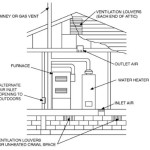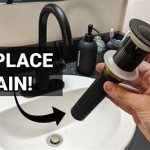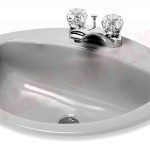Can You Put Vinyl In Bathrooms? Exploring the Pros, Cons, and Best Practices
Vinyl flooring has emerged as a popular choice for various areas of the home, largely due to its affordability, durability, and ease of installation. One area where its suitability is often questioned is the bathroom. Bathrooms present unique challenges to flooring materials, primarily related to moisture exposure. Understanding the capabilities and limitations of vinyl in this context is crucial for making informed decisions about bathroom renovations or new construction.
Vinyl flooring broadly encompasses several types, including sheet vinyl, vinyl tile, and luxury vinyl plank (LVP). Each type possesses slightly different characteristics that can affect its performance in a bathroom environment. Sheet vinyl offers the fewest seams, which can be advantageous in preventing water infiltration. Vinyl tile, available in both peel-and-stick and glue-down versions, offers greater design flexibility but requires careful installation to prevent moisture from seeping between tiles. LVP, often designed to mimic hardwood or stone, provides an aesthetic appeal similar to more expensive materials, while retaining the water-resistant properties of vinyl.
Water Resistance and Waterproofing: Understanding the Difference
While often used interchangeably, the terms "water-resistant" and "waterproof" have distinct meanings when applied to flooring. Water-resistant flooring can withstand moisture exposure for a limited time. Spills and splashes can be wiped away without causing damage, but prolonged exposure to standing water can eventually lead to issues such as warping or delamination. Many vinyl flooring products marketed for bathroom use are water-resistant.
Waterproof flooring, on the other hand, is designed to prevent water from penetrating the material entirely. It provides a higher level of protection against water damage, making it a more robust option for bathrooms. Some luxury vinyl options are specifically engineered to be waterproof, featuring a core layer that prevents water absorption. When selecting vinyl for a bathroom, determining whether water resistance or waterproofing is required is a crucial step. A bathroom with heavy usage, such as one frequently used by children, may benefit from the added protection of waterproof vinyl.
Even with waterproof vinyl, proper installation is critical. Gaps between planks or tiles can still allow water to seep beneath the flooring, potentially damaging the subfloor. Applying a waterproof sealant along the edges of the room and around fixtures like toilets and sinks can further protect against water infiltration.
Durability and Maintenance in a Bathroom Setting
Beyond water resistance, the durability of vinyl flooring is another important consideration for bathroom applications. Bathrooms often experience high foot traffic, and the flooring must withstand the wear and tear of daily use. Look for vinyl flooring with a thick wear layer, which is the top protective coating that resists scratches, scuffs, and stains. A thicker wear layer will generally provide better durability and a longer lifespan.
Maintaining vinyl flooring in a bathroom is relatively straightforward. Regular sweeping or vacuuming removes dirt and debris that can scratch the surface. Occasional damp mopping with a mild detergent is usually sufficient to keep the floor clean. Harsh chemicals and abrasive cleaners should be avoided, as they can damage the wear layer and dull the finish. Ensuring adequate ventilation in the bathroom can also help prevent moisture buildup and mildew growth, prolonging the life of the vinyl flooring.
While vinyl is generally resilient, it is not impervious to damage. Sharp objects can puncture or scratch the surface. Placing mats or rugs in high-traffic areas can help protect the flooring from wear and tear. Promptly addressing any spills or leaks can prevent water damage and staining.
Installation Considerations for Bathroom Vinyl
Proper installation is essential for maximizing the benefits of vinyl flooring in a bathroom. The subfloor must be clean, level, and dry before installation begins. Uneven surfaces can lead to uneven flooring and potential warping. A moisture barrier may be necessary if the subfloor is prone to moisture. For concrete subfloors, a self-leveling compound may be required to create a smooth surface.
The type of vinyl flooring selected will influence the installation method. Sheet vinyl typically requires professional installation due to its size and the need for precise cutting and sealing. Vinyl tiles and LVP can often be installed as a DIY project, although professional installation is recommended for best results, particularly in larger or more complex bathrooms. Peel-and-stick tiles are the easiest to install, but glue-down versions provide a more secure and long-lasting bond.
When installing vinyl around toilets, sinks, and other fixtures, careful attention to detail is crucial. The flooring should be cut to fit snugly around these fixtures, and a waterproof sealant should be applied to prevent water from seeping underneath. Leaving expansion gaps around the perimeter of the room can also help prevent buckling or warping due to temperature and humidity fluctuations.
For click-lock LVP, ensuring a tight and secure fit between planks is essential for creating a waterproof surface. Any gaps or loose connections can compromise the flooring's water resistance. Using a tapping block and mallet can help ensure that the planks are properly locked together. Always follow the manufacturer's instructions for installation, as specific requirements may vary depending on the product.
Aesthetic Considerations and Design Options
Vinyl flooring offers a wide range of aesthetic options, making it easy to find a style that complements the existing bathroom décor. Vinyl tile and LVP are available in a variety of colors, patterns, and textures, mimicking the look of natural stone, wood, or ceramic tile. Sheet vinyl also offers a wide array of designs, including realistic patterns and embossed textures.
When choosing a color and pattern, consider the size and layout of the bathroom. Lighter colors can make a small bathroom appear larger and brighter. Darker colors can add a touch of sophistication and warmth. Patterns can be used to add visual interest, but it's important to choose a pattern that doesn't overwhelm the space.
The texture of the vinyl flooring can also affect the overall look and feel of the bathroom. Embossed textures can add a tactile element, while smooth surfaces are easier to clean. Some vinyl flooring products are designed with slip-resistant surfaces, which can be particularly beneficial in bathrooms where the floor is often wet.
Cost Comparison and Long-Term Value
Vinyl flooring is generally a more affordable option than natural stone, ceramic tile, or hardwood. The initial cost of vinyl flooring is typically lower, and the installation costs can also be less, especially for DIY projects. However, it's important to consider the long-term value of the flooring when making a decision.
While vinyl flooring is durable, it may not last as long as some other flooring materials, such as ceramic tile. The lifespan of vinyl flooring can vary depending on the quality of the product, the level of foot traffic, and the maintenance practices. A high-quality vinyl flooring product with a thick wear layer can last for 10 to 20 years or more with proper care.
When comparing the cost of vinyl flooring to other options, it's important to consider the total cost of ownership, including the cost of materials, installation, and maintenance. Vinyl flooring may be a more cost-effective option in the long run due to its lower maintenance requirements and ease of repair.
Addressing Potential Concerns: Mold and Mildew
One common concern regarding vinyl flooring in bathrooms is the potential for mold and mildew growth. While vinyl itself is resistant to mold and mildew, moisture trapped underneath the flooring can create a breeding ground for these organisms. Proper installation and adequate ventilation are key to preventing this issue.
Ensuring that the subfloor is thoroughly dry before installing vinyl flooring is crucial. Installing a moisture barrier can also help prevent moisture from seeping up from the subfloor. Regularly inspect the flooring for any signs of water damage or leaks, and promptly address any issues that are found.
Maintaining adequate ventilation in the bathroom can also help prevent moisture buildup. Using an exhaust fan during and after showers can help remove excess moisture from the air. Opening windows can also help improve ventilation. If mold or mildew does develop, it's important to clean it promptly with a mold-killing cleaner.
In summary, vinyl flooring can be a suitable choice for bathrooms, offering a balance of affordability, durability, and aesthetic appeal. However, careful consideration must be given to the type of vinyl selected, the quality of installation, and the maintenance practices. Choosing a waterproof vinyl product, ensuring proper installation, and maintaining adequate ventilation can help maximize the benefits of vinyl flooring in a bathroom setting.

Vinyl Planks In Bathrooms Residential Inspiration Flooring

Dos And Don Ts For Installing Vinyl Plank Floors In The Bathroom Advice Homeowners

Can You Renovate Bathrooms With Vinyl Flooring Imagine Floors

Can Vinyl Flooring Be Used In A Bathroom Hallmark Floors

How To Install Vinyl Plank Flooring In A Bathroom Fixthisbuildthat

How To Install Vinyl Plank Floors In A Bathroom Over Tile

Luxury Vinyl Tile Floors For A Bathroom The Ultimate Guide

How To Install Sheet Vinyl Around A Toilet

Luxury Vinyl Flooring Is A Great Choice For Chic Bathrooms

What Is The Best Flooring For Bathrooms Tarkett
Related Posts







